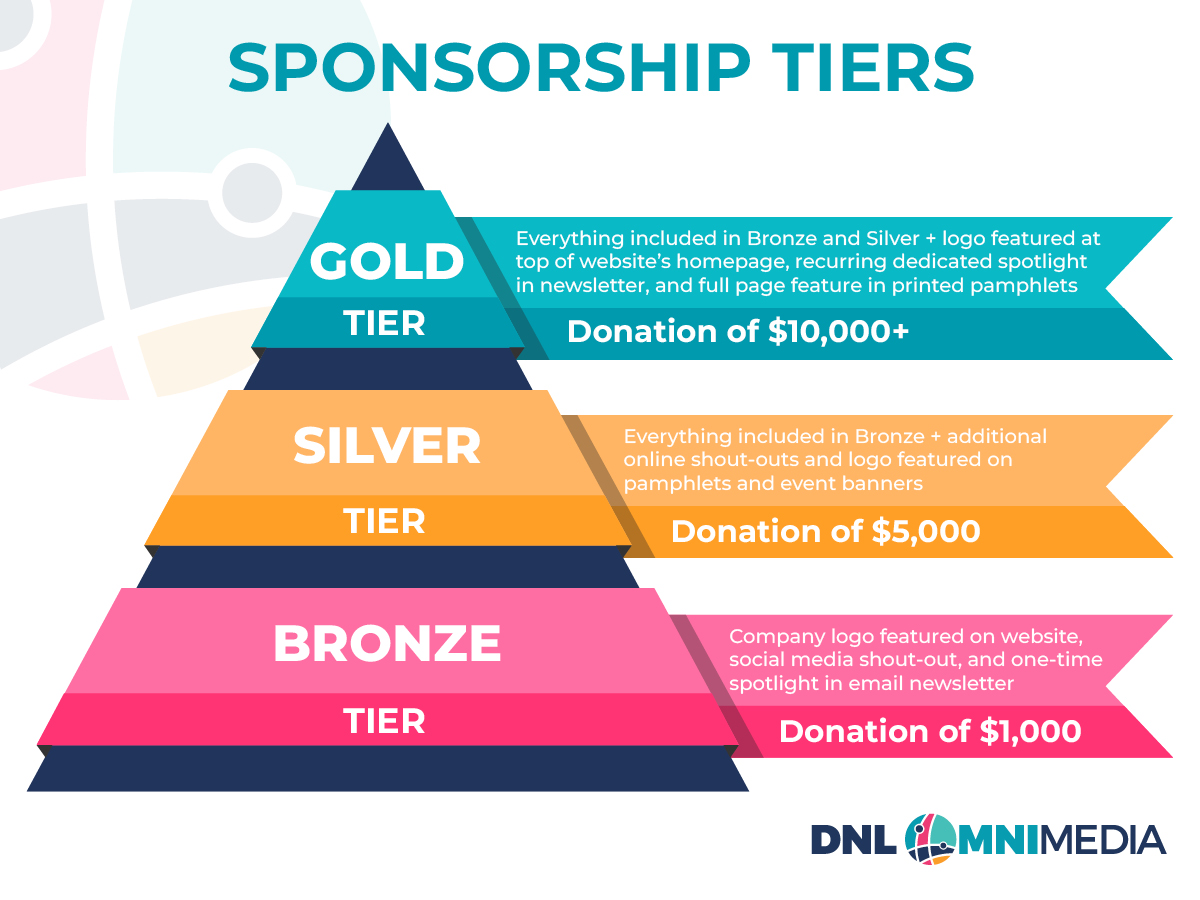
We’ve all attended events that were, frankly, quite boring. Perhaps it was your cousin’s four-hour-long graduation ceremony or that conference you had to attend when you worked for that paper-clip company. You probably spent your time struggling to keep your eyes open throughout these less-than-engaging experiences.
As a nonprofit event coordinator, you know that engaging with your supporters before and during your events is critical to planning a well-attended and exciting event. But after hosting many events over the years, how can your organization change up its approach and plan more engaging activities?
In this post, we’ll highlight a few ideas and tips that can help you engage with your supporters more effectively to create better events. Using your digital strategy along with a few unique twists, you can avoid glazed looks and vacant stares from your audience members.
These tips can apply to any type of nonprofit event: whether you’re hosting a charity auction, a fundraising 5K, conference, webinar, and so on. Let’s get started!
1. Plan hybrid events.
A hybrid event allows you to appeal to both in-person and remote audiences, creating an opportunity that’s the best of both worlds. The format will work for pretty much any event type, including:
- Auctions
- 5Ks
- Fundraising concerts
- Conferences/panels
- Galas
Remember, as you plan a hybrid event, come up with ways to engage both audiences in equal measure. You wouldn’t want to focus all of your attention on one set of supporters, causing the other attendees to feel neglected. Instead, think of ways to engage both audiences, such as
- Running a simultaneous poll for both audiences
- Hosting Q&A sessions and fielding questions from both audiences
- Integrating cameras into your event space to help bring the event to life for virtual participants
Ultimately, a well-run hybrid event can increase supporter engagement, allowing you to connect with both an in-person and remote audience. Supporters will appreciate having the flexibility to choose how they want to get involved.
2. Offer incentives.
Sit down with your event planning team and ask yourselves this question: why should someone take the time out of their day to attend your event? Or rather, what’s in it for them?
Many attendees will be driven by an affinity for your mission and a desire to get more involved. But it never hurts to offer a few perks to help encourage those who might be on the fence about participating!
Consider offering the following incentives during your event:
- Networking opportunities to help attendees further their professional careers.
- Free merchandise branded with your nonprofit’s logo, colors, and typography.
- Free food— because who doesn’t love free food?
- Giveaways for a special prize, such as a gift certificate or basket.
- VIP event access for long-time donors and volunteers, allowing them to access prime seating, a free buffet, and other VIP perks.
When your event brings value to attendees as well as your organization, your supporters will be much more likely to participate in future opportunities. They may even talk up the experience among their family members and friends— helping to grow your audience for future events!
If you’re hosting a hybrid event, be sure to make these incentives available to your virtual attendees as well. You can send them free merchandise through the mail or connect them with virtual networking opportunities to help them feel more connected to your organization.
3. Create a wider-reaching marketing strategy.
An engaging event starts with an engaging marketing strategy. The more supporters who are excited to attend, the more energy and enjoyment your event will have.
Conduct a bit of market research to determine your target audience’s preferred communication channels. Then, consider the following marketing channels and choose a handful that you think will work best for your unique audience and marketing goals:
- TV and radio spots. Connecting with nearby TV and radio outlets can be a great way to reach your local audience. Make sure your ads include all of the need-to-know event information, such as the date, time, purpose, location, and other logistical details.
- Flyers. Go old-school by creating an event flyer to post around town. Re:Charity recommends designing your flyer with your nonprofit’s and event’s name, branding, and logo and compelling, eye-catching visuals. Include a QR code on your flyers that passersby can scan to access your information and registration page.
- Word-of-mouth marketing. Spread the word about your upcoming events at other events you host or events you attend that are hosted by other organizations. This might include your annual donor appreciation gala, local farmers’ market, or a community festival.
- Social media. Craft posts counting down the weeks, days, and hours until your event kicks off. Choose a unique hashtag for your event to use in your promotional posts. Also, consider direct-messaging specific supporters and followers who you think would enjoy your event, and personally invite them. Offer incentives to encourage supporters to share event information on their social media pages and stories. For instance, you might offer free tickets, upgrades, or event merchandise.
- Email. Email is a reliable marketing platform that allows you to reach out to potential event attendees directly. Create audience segments to send more personalized messages to each supporter group. For example, you might create segments for donors, volunteers, and previous event attendees and send slightly different emails to each group that appeal to their interests.
Make sure your marketing materials highlight the incentives and other benefits that attendees will receive when they participate in your event. Also, use your event and donor management tools to track registrations and assess which marketing channels are most effective for engaging potential attendees.
4. Give attendees more to do.
Your supporters shouldn’t just attend your event—they should be excited to actively engage in your activities so they can enjoy every aspect of the experience. This can make the event much more fulfilling and engaging for everyone involved, even those attending from their couch!
Here are a few ideas to engage your supporters more deeply in your event’s activities:
- Add a silent auction to your event. A silent auction allows guests to bid on valuable items using pieces of paper, or more recently, online auction websites. According to Handbid’s silent auction guide, these initiatives pair well with events like galas, dinners, or other gatherings. Your guests can participate in the auction at any point during the event, keeping them engaged even when there may be idle time.
- Launch a peer-to-peer fundraiser ahead of your event. Peer-to-peer fundraisers pair well with fundraising events such as walk-a-thons or 5K races. Participants will collect donations from family and friends ahead of time using personalized fundraising pages. Then, you can treat the event as a celebration of supporters’ fundraising successes and thank them for their hard work.
- Incorporate supporter feedback throughout the entire process. Ask your supporters for feedback on everything from your event’s theme to your merchandise design. Gather this information by sending pre-event surveys and conducting social media polls. Then, consider what feedback can be incorporated into this event or future opportunities.
Engaging attendees in a variety of event activities can give them a larger stake in your event’s success, making them feel like equal partners in working toward your mission. Once you reveal your event’s fundraising total, supporters will feel fulfilled knowing that their work helped make a major difference for your cause.
5. Add an element of surprise.
Your marketing and outreach efforts prior to your event will help get more guests through the door. By adding a unique twist or exciting surprise to your event lineup, you can get attendees truly buzzing about your event and happy that they took the time to attend.
For example, your event might include fun elements like:
- Unique or exciting auction items. If you’re planning an auction, attendees will be more excited about bidding if you’re offering items they won’t really be able to get anywhere else. A few unique silent auction items to try to acquire include signed sports memorabilia, hard-to-get game tickets, and one-of-a-kind artwork from local artists.
- Surprise guests. Create a memorable moment during your event by bringing out an unexpected performer or a well-known speaker from your favorite webinar or panel.
- A twist on an old classic. Add some flair to your annual 5K by turning it into a color or bubble run. Give your annual gala or auction a fun theme, like a masquerade or the roaring twenties. Essentially, think of how you can exceed attendees’ expectations and make your routine events more engaging.
These ideas can help your event stand out from other organizations’ events and leave attendees with a long-lasting positive impression of your nonprofit.
6. Work with corporate partners.
Providing more activities, expanding your marketing, and adding a few surprises make the event experience more exciting, but how can your nonprofit add these elements to your next fundraiser? Whether they’re directing an activity or simply funding it, sponsors are usually the go-to answer for how nonprofits can level up their events.
Far ahead of your event, research and approach potential sponsors to pitch why they should support your event. In your pitch, plan to discuss:
- Who your nonprofit is. Craft a short, punchy elevator pitch that explains your nonprofit’s mission, why your organization is uniquely suited to carry out this mission, and how the specific event you’re seeking sponsorships for will benefit your mission. When explaining your nonprofit’s mission, relate it to the business’s philanthropic mission statement or past philanthropy efforts. This helps explain why a business should sponsor your nonprofit specifically.
- What the sponsorship will look like. Explain what you would expect the business to do as part of the sponsorship. While some sponsors may want to negotiate custom deals, it’s usually best to approach businesses with a few packages to choose from. These packages are typically referred to as sponsorship tiers and contain a set of benefits in exchange for a certain amount of funding.

- The benefits to the sponsor. Don’t leave the benefits listed on your sponsorship tiers for the business to read at their leisure. Emphasize what businesses can gain from sponsoring you based on whatever assistance you’re requesting. For example, if requesting marketing assistance, you might focus on the potential reputation boost the business will receive, or if requesting auction items or for the business to host an activity, you might explain they are essentially demoing their products and services to potential customers.
When planning to approach businesses, set up meetings with lower and medium-priority sponsor candidates first. These first meetings will allow your team to practice and refine their pitch in a lower-stakes environment.
Planning an engaging event can require a lot of effort up front, but it will be well worth it when you can deliver a more exciting experience that builds stronger relationships with your supporters. Remember to track a variety of event-related analytics, such as the rate of registrations vs. actual attendance and who your top donors were. You can use these insights to adjust your event marketing and planning strategies going forward.
About the Author: Jeff Porter, Founder & CEO of Handbid

Jeff Porter has spent 18 years in the nonprofit industry. In 2004 he founded the Prader-Willi Syndrome Association of Colorado where he still resides as board chair. Jeff learned early on that nonprofits desperately needed better and more affordable fundraising solutions. Leveraging his software background, he built most of the tools his charities used, and in 2011 he launched Handbid at his own fundraising event. The goal was to improve the guest experience, reduce administration and increase revenue. Handbid accomplished all of those goals, effectively doubling revenue in its debut. Nine years later, Handbid’s suite of tools has delighted over a half-million guests, generated millions of bids, and helped thousands of charities raise well over $100 million.
